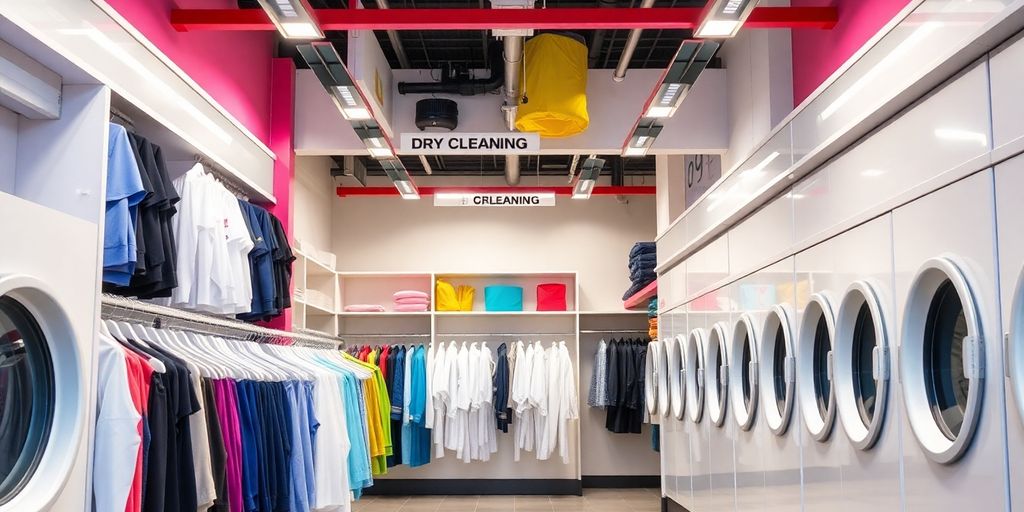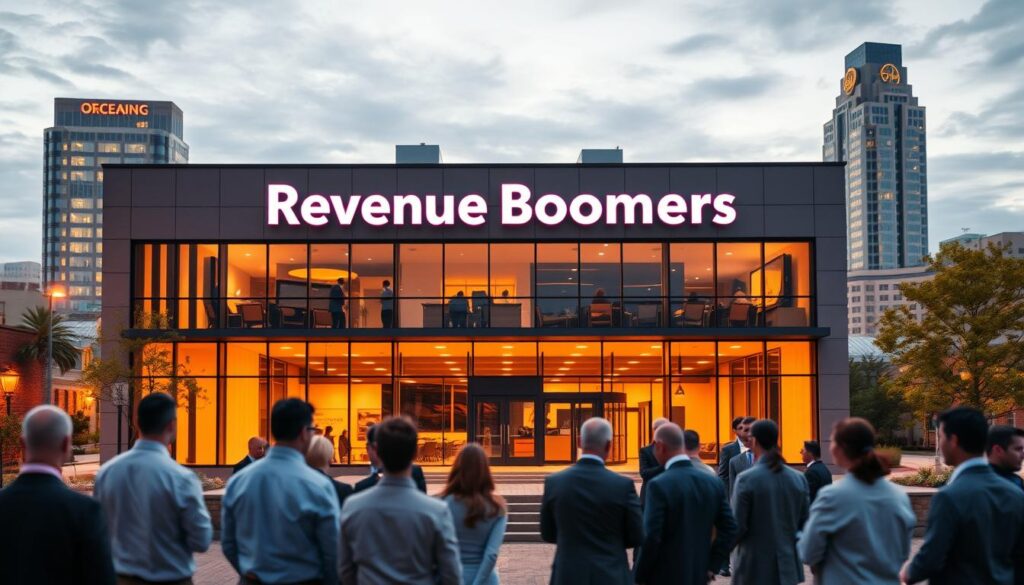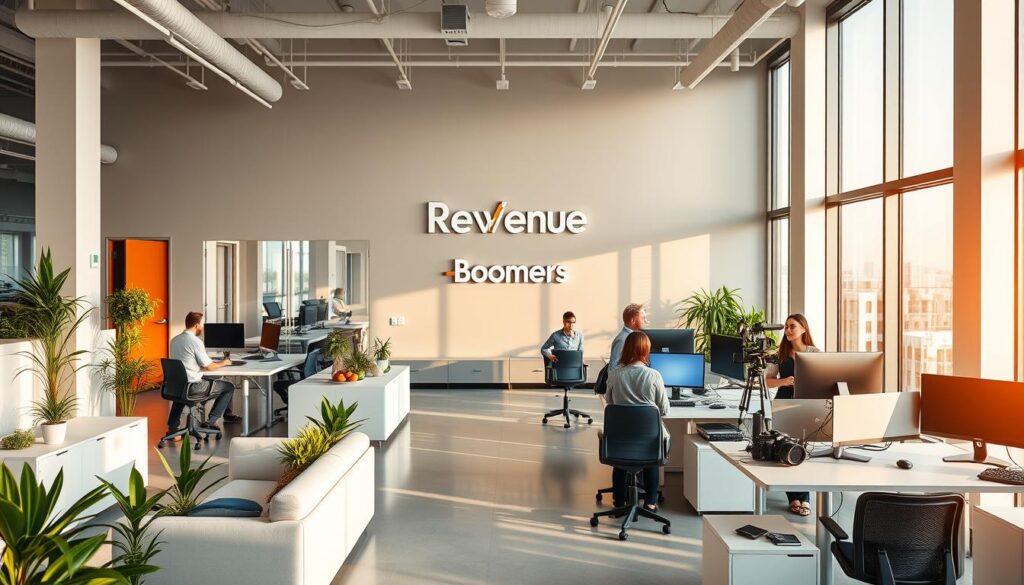If you’re running a dry cleaning business and haven’t tapped into the world of SEO yet, you’re missing out. SEO, or search engine optimization, is like having a giant neon sign pointing customers to your shop online. It’s not just for tech giants or e-commerce sites; local businesses like dry cleaners can hugely benefit. By optimizing your online presence, you can attract more local customers who are actively searching for your services. In this article, we’ll break down what SEO means for dry cleaners and how you can use it to your advantage.
Key Takeaways
- Understanding SEO can significantly boost your dry cleaning business’s online visibility.
- Local SEO is crucial for attracting customers in your area searching for dry cleaning services.
- Effective keyword research can help target the right audience and improve search rankings.
- Improving website design and mobile responsiveness enhances user experience and SEO performance.
- Regularly updating content and encouraging customer reviews can maintain and improve SEO results.
Understanding SEO for Dry Cleaners
Defining Search Engine Optimization
Search Engine Optimization, or SEO, is all about making your dry cleaning business more visible online. Think of it like setting up a bright sign outside your store—but in the digital world. SEO helps your website show up when people search for things like "best dry cleaner near me" on Google. There are three main types of SEO: on-page, off-page, and technical. On-page SEO involves tweaking things on your website, like using the right keywords and making sure your content is easy to read. Off-page SEO is about activities outside your site, like getting other websites to link to you. Technical SEO is more behind-the-scenes stuff, like ensuring your website loads quickly and is mobile-friendly.
Importance of SEO in Dry Cleaning
Why should dry cleaners care about SEO? Well, it’s simple: more visibility equals more customers. SEO can help your business pop up in the top search results, and let’s be honest, folks rarely scroll past the first page. This means if you do SEO right, you can attract more local customers. Plus, SEO works hand in hand with other marketing strategies, like pay-per-click ads. While it might take a few months to see results, it’s a long-term investment that keeps on giving.
Investing in SEO is like planting a tree—it takes time to grow, but once it does, it provides shade for years.
Types of SEO Strategies
When it comes to boosting your dry cleaning business online, there are several SEO strategies to consider:
- Keyword Research: Find out what terms people use to search for dry cleaning services and sprinkle these keywords throughout your website.
- Local SEO: Make sure your business appears in local searches by optimizing your Google My Business profile and using local keywords.
- Content Creation: Regularly update your website with fresh, relevant content like blogs or tips on garment care.
- Backlink Building: Get other reputable websites to link to your site, which can boost your credibility and search ranking.
- Technical SEO: Ensure your website is mobile-friendly and loads quickly. Google prioritizes sites that offer a great user experience.
By focusing on these strategies, your dry cleaning business can improve its online presence, attract more customers, and ultimately grow.
Key Components of Effective SEO
Keyword Research Techniques
Keyword research is the backbone of any successful SEO strategy. It’s all about figuring out what words or phrases your potential customers are using when they’re searching for services like yours. For dry cleaners, this might mean focusing on terms like "local dry cleaning services" or "eco-friendly dry cleaners near me." Using the right keywords can make a huge difference in how easily customers can find you online.
To get started, consider these steps:
- Brainstorm a list of potential keywords: Think about what your customers might type into a search engine.
- Use keyword research tools: Tools like Google’s Keyword Planner can help you find out how often certain words are searched.
- Analyze the competition: See what keywords your competitors are ranking for and consider if they might work for you too.
On-Page SEO Best Practices
On-page SEO refers to the tweaks and adjustments you can make directly on your website to improve its search engine ranking. This includes optimizing your content, images, and meta descriptions to ensure they align with your target keywords.
Here’s a quick checklist:
- Optimize your title tags and meta descriptions: Make sure they include your main keywords and are compelling enough to attract clicks.
- Use header tags: Structure your content with H1, H2, and H3 tags to make it easier for search engines to understand.
- Ensure your images are optimized: Use alt tags and compress images to improve loading times.
Off-Page SEO Strategies
Off-page SEO is all about building your website’s reputation and authority through external means. This often involves link building, where other reputable sites link back to your content.
To boost your off-page SEO:
- Earn quality backlinks: Reach out to industry-related websites to see if they will link to your content.
- Engage on social media: Share your content on platforms like Facebook and Instagram to increase its reach.
- Participate in local community events: This can lead to mentions or links from local news sites or blogs, boosting your local SEO efforts.
Remember, SEO is not a one-time task but an ongoing process. Regularly updating your strategy in response to changing algorithms and market trends is key to maintaining and improving your search engine ranking.
Local SEO Strategies for Dry Cleaners

To attract local customers, dry cleaners need to focus on specific strategies that enhance their visibility in local search results. Here’s how you can effectively implement local SEO:
Optimizing Google My Business
One of the first steps in local SEO is to claim and optimize your Google My Business (GMB) profile. This platform is crucial as it helps your business appear in local search results and Google Maps. Make sure to provide accurate information such as your business name, address, phone number, and operating hours. Regularly update your profile with posts about promotions or new services. A well-maintained GMB profile can significantly boost your local search visibility.
Utilizing Local Keywords
Incorporating local keywords into your website content is essential. These are search terms that include your location, such as "dry cleaners in Brooklyn." Use these keywords naturally in your meta descriptions, headings, and throughout your site content. This practice helps search engines understand where your business is located and what services you offer, making it easier for local customers to find you.
Encouraging Customer Reviews
Customer reviews are a powerful tool in local SEO. Encourage satisfied customers to leave positive reviews on platforms like Google, Yelp, or Facebook. Respond to reviews, both positive and negative, to show that you value customer feedback. Positive reviews not only enhance your online reputation but also improve your ranking in local search results.
Local SEO is not just about being found; it’s about being chosen. By optimizing your online presence for local searches, you ensure that your dry cleaning business stands out in your community.
Enhancing User Experience for SEO
Importance of Website Design
Your website is like your storefront. If it’s cluttered or confusing, people will walk away. A clean, simple design helps visitors find what they need without any hassle. Good design is not just about looks; it’s about function. Make sure your site is easy to navigate, with clear menus and a logical structure. This helps both users and search engines understand your site better.
Mobile Responsiveness
More than half of web traffic comes from mobile devices. If your site doesn’t work well on phones and tablets, you’re losing out on a big audience. Google uses mobile-first indexing, which means it looks at the mobile version of your site first. Make sure your site is responsive, adapting smoothly to different screen sizes. Test it on various devices to ensure it looks and works great everywhere.
Page Loading Speed
Nobody likes waiting for a page to load. If your site is slow, visitors will leave, and search engines will notice. Speed things up by compressing images and using a reliable hosting service. Check your site’s speed regularly and make improvements where needed. Remember, a fast site keeps users happy and helps your SEO efforts.
Measuring SEO Success

Key Performance Indicators
To really know if your SEO efforts are paying off, you gotta keep an eye on some key performance indicators (KPIs). These metrics give you a snapshot of how well your site is doing. Organic traffic is a big one—it’s all about the number of visitors finding you through search engines. Then there’s the bounce rate, which tells you how many people leave your site after just visiting one page. A high bounce rate might mean your content isn’t what people expected.
Other important KPIs include the click-through rate (CTR), conversion rate, and keyword rankings. CTR shows how many people click your link when they see it in search results. Conversion rate is about turning those visitors into customers. And of course, you want to track where your keywords are ranking in search results.
Tools for Tracking SEO Progress
To keep tabs on these KPIs, you’ll need some tools. Google Analytics is a must-have—it provides loads of data about your traffic and user behavior. Another handy tool is Google Search Console, which gives insights into your site’s search performance and any issues that need fixing. SEO-specific tools like SEMrush or Ahrefs can help you dig deeper into keyword performance and competitor analysis.
Here’s a quick list of tools you might consider:
- Google Analytics
- Google Search Console
- SEMrush
- Ahrefs
Adjusting Strategies Based on Data
Once you’ve got all this data, the next step is using it to tweak your strategies. Maybe a certain keyword isn’t performing as expected, or your bounce rate is higher than you’d like. This is where you adapt. If something’s not working, try a different approach or test new keywords.
Success in SEO is about being flexible and responsive to what the data tells you. It’s not a set-it-and-forget-it kind of thing. Regularly reviewing your metrics and making adjustments is key to staying ahead.
In the end, measuring SEO success is all about understanding these metrics and using them to guide your strategy. For small businesses, these insights are crucial for boosting visibility and driving growth.
Common SEO Mistakes to Avoid
Neglecting Mobile Optimization
Let’s face it, everyone uses their phones for everything these days. Ignoring mobile optimization is like shooting yourself in the foot. If your website isn’t mobile-friendly, you’re missing out on a huge chunk of potential customers. Google prioritizes mobile-friendly sites in its rankings, so if your site isn’t up to scratch, you’re likely getting buried in search results. Make sure your site is responsive and looks good on all devices.
Ignoring Local SEO
For dry cleaners, local SEO is a game changer. People often search for services "near me", and if your business isn’t showing up, that’s a problem. You need to optimize your Google My Business listing and use local keywords to ensure you’re visible to nearby customers. Neglecting this can severely impact your business visibility and revenue.
Overlooking Content Quality
Content is king, but only if it’s good. Poor-quality content can drive people away and hurt your SEO efforts. Make sure your content is relevant, informative, and engaging. Use keywords wisely, but don’t stuff them in just for the sake of it. Focus on what your audience wants to read about and answer their questions. This not only helps with SEO but also builds trust with your readers.
Skipping on quality content is like trying to fill a bucket with a hole in it. You might get some results, but they’ll leak out just as fast. Aim for content that not only attracts but retains visitors.
Wrapping It Up: SEO for Dry Cleaners
So, there you have it. SEO for dry cleaners might seem like a big puzzle at first, but once you get the hang of it, it’s like having a secret weapon for your business. By focusing on the right keywords, making sure your website is easy to use, and keeping up with local SEO, you’re setting yourself up for success. Remember, it’s not about overnight results. SEO is more of a marathon than a sprint, but with patience and the right strategies, you’ll start seeing those clicks turn into customers. So, roll up your sleeves and dive into the world of SEO. Your dry cleaning business will thank you for it!
Frequently Asked Questions
What is SEO and why is it important for dry cleaners?
SEO stands for Search Engine Optimization. It’s a way to make your dry cleaning business appear higher in search results on the internet. This is important because it helps more people find your business when they search for dry cleaning services online.
How can I start using SEO for my dry cleaning business?
You can start by researching keywords that people use when looking for dry cleaning services. Then, use these keywords in your website content. It’s also important to make sure your website is easy to use and loads quickly.
What are some common SEO mistakes to avoid?
Some common mistakes include not making your website mobile-friendly, ignoring local SEO, and not focusing on creating good quality content.
How does local SEO help my dry cleaning business?
Local SEO helps your business show up in searches made by people in your area. This is done by using local keywords and making sure your business information is correct on sites like Google My Business.
Why is mobile-friendliness important for SEO?
Many people use their phones to search online. If your website doesn’t work well on mobile devices, you could lose potential customers. Also, search engines like Google rank mobile-friendly sites higher.
How can I measure the success of my SEO efforts?
You can measure SEO success by looking at metrics like website traffic, search rankings, and customer engagement. Tools like Google Analytics can help you track these metrics.






